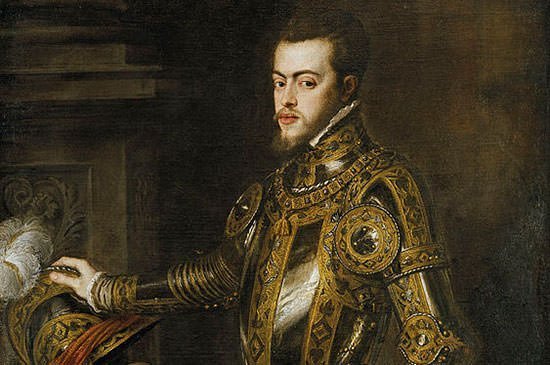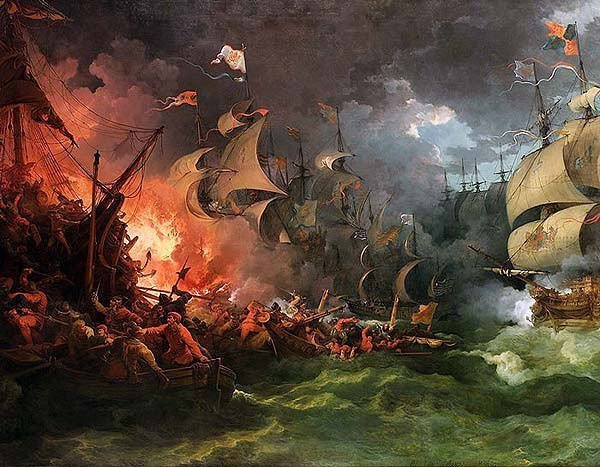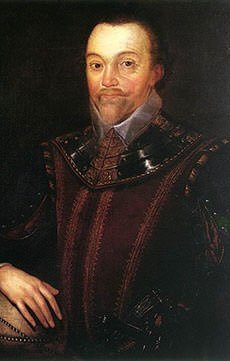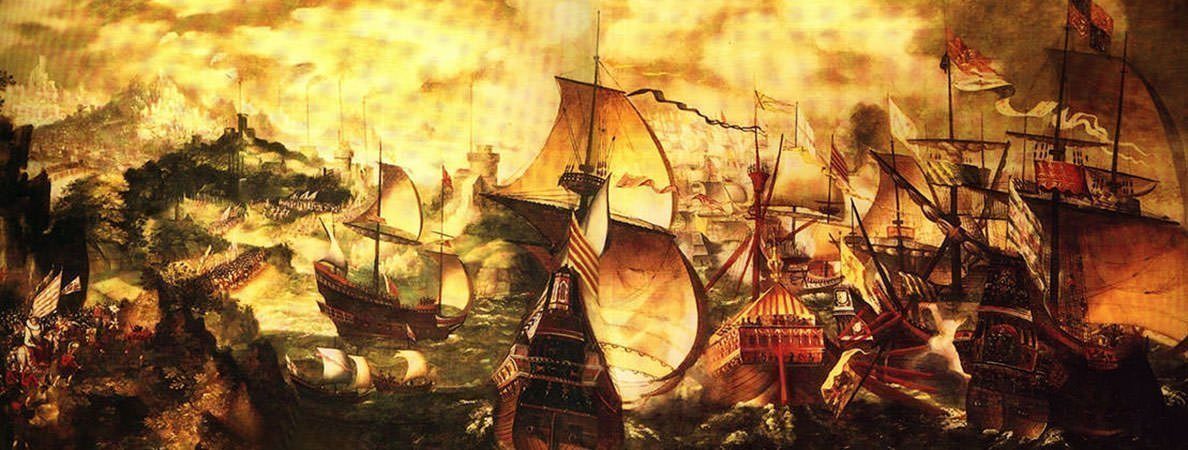The Spanish Armada was a Spanish fleet of 130 ships which set sail in 1588 with the purpose of assisting an invasion of England to overthrow Queen Elizabeth I. Here are 10 interesting facts about the fleet which is also known as the Invincible Armada.
#1 THE PRIMARY REASON BEHIND Its Formation WAS RELIGION
The Spanish Armada was sent during the reign of Spain’s Roman Catholic king Philip II to help in overthrowing England’s Protestant queen Elizabeth I. Philip had previously supported plots to overthrow Elizabeth in favour of her Catholic cousin Mary, Queen of Scots. In response Elizabeth imprisoned and finally executed Mary in 1587. Also Spain’s control over Spanish Netherlands, which consisted of modern Holland and Belgium, was being challenged as England aided the Dutch Protestants in their revolt against Spain.

#2 THE PURPOSE OF THE FLEET WAS TO ASSIST INVASION OF ENGLAND
Alexander Farnese, the Duke of Parma and Governor of the Spanish Netherlands, had prepared a force of 30,000 troops to invade England. He wanted to carry out the invasion without naval protection but Philip II overruled him and started preparing the Spanish Armada. The plan was that Spanish fleet would defeat or deter the English fleet and clear the Strait of Dover for Parma’s invasion force to cross from Flanders over to south eastern England.

#3 THE SPANISH ARMADA WAS LED BY THE DUKE OF MEDINA SIDONIA
The Spanish Armada was supposed to be led by the highly experienced Alvaro de Bazan, Marquis of Santa Cruz. However he died in February 1588, a few months before the Armada set sail. The responsibility was then given to the Don Alonso, 7th Duke of Medina Sidonia, who had no naval experience. Medina Sidonia wrote to Philip II and expressed doubts about the success of the Armada but fear prevented the courtiers from showing the letter to the King.

#4 It WAS MASSIVE Consisting OF ABOUT 130 SHIPS
The Spanish Armada consisted of around 130 ships, 8,000 sailors and 18,000 soldiers. It bore around 1,500 brass guns and 1,000 iron guns. About 40 of the 130 ships were line-of-battle ships, the rest being mostly transports and light craft. The English fleet to counter the Armada consisted of 200 ships though during most of the fighting it was roughly the same size as the Spanish fleet. The Armada had around 50% more firepower available than the English fleet.

#5 IT SET SAIL ON MAY 28, 1588 AND REACHED NEAR PARMA’S ARMY ON JULY 27
The Spanish Armada set sail from Lisbon on 28 May 1588. After a few skirmishes with the English fleet, the Armada reached the port of Gravelines on July 27. The news reached Parma the same day but he required six days to get his troops in the invasion craft. However the Armada had no safe port to wait for him and to get to the Armada, Parma’s Army of Flanders would have to cross a zone dominated by the Dutch navy, which was supporting the English. This was a massive defect in the Spanish plan.

#6 ENGLISH HELL BURNERS BROKE Its FORMATION
During the night of July 28, eight English ships loaded with anything that could burn well attacked the Spanish Armada. Ships in the Armada were carrying gunpowder and were made of wood which meant that any ship hit in this attack would be lost. So when the English fire ships known as “Hell Burners” attacked the Armada, its ships moved to avoid catching fire. Although only one Spanish ship was lost, the crescent formation of the Armada was broken and now it was vulnerable to attack.
#7 ‘INVINCIBLE ARMADA’ WAS DEFEATED IN THE BATTLE OF GRAVELINES
On July 29, 1588, the English fleet badly damaged the Spanish Armada in the Battle of Gravelines. Five Spanish ships were lost and many were badly battered. The battle ended because the English ships ran out of ammunition. Better maneuverability and speed of the smaller English ships, the broken formation of the Spanish Armada and the stubbornness of the Spanish to fight by boarding rather than through cannon fire are cited as the major causes of the defeat of the ‘Invincible Armada’ in this decisive battle.

#8 It HAD A DISASTROUS RETURN VOYAGE
The English fleet and the west wind defeated the purpose of the Armada of joining Parma’s army. Medina Sidonia was left with no option but to order a return to Spain. The return journey of the Spanish Armada was disastrous as it was hit by severe storms; the supply of food and water ran out; and a large portion of the vessels were wrecked on the coasts of Scotland and Ireland. Only 67 of the 130 ships reached Spain. Fewer than 10,000 of the 26,000 men were able to survive and many more died due to diseases contracted during the voyage.

#9 ITS DEFEAT IS RANKED AMONG ENGLAND’S GREATEST MILITARY VICTORIES
The defeat of the Spanish Armada ended the era of boarding and ramming in naval warfare and started an age in which naval warfare was fought with long range weapons. Elizabeth I was associated with one of the greatest military victories in English history and this established her legend which grew long even after her death. It was also important for the Protestant cause as many people believed that God was behind them and against the Catholics.

#10 ENGLAND ORGANIZED A COUNTER ARMADA THE FOLLOWING YEAR
Sir Francis Drake played a crucial role in the defeat of the Armada making him a hero in England. He delayed the Spanish invasion a year by destroying 37 Spanish ships in a pre-emptive strike in 1587. He was the vice admiral of the English fleet when it overcame the Spanish Armada and was also responsible for organizing the fire ships. A year after the defeat of the Armada, Drake along with Sir John Norreys led a similar campaign against the Spanish which is also known as the “Counter-Armada of 1589” but it was also unsuccessful.


Amazing thank you very helpful
Happy to help.
It is interesting